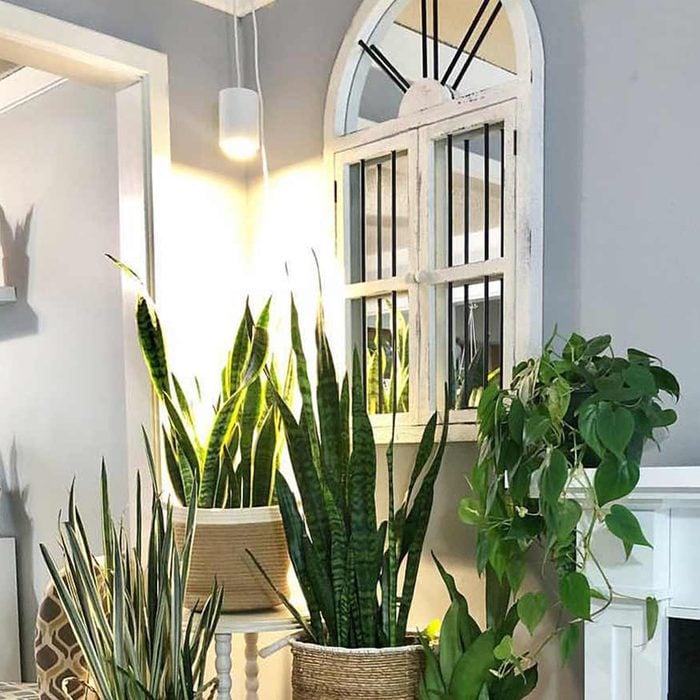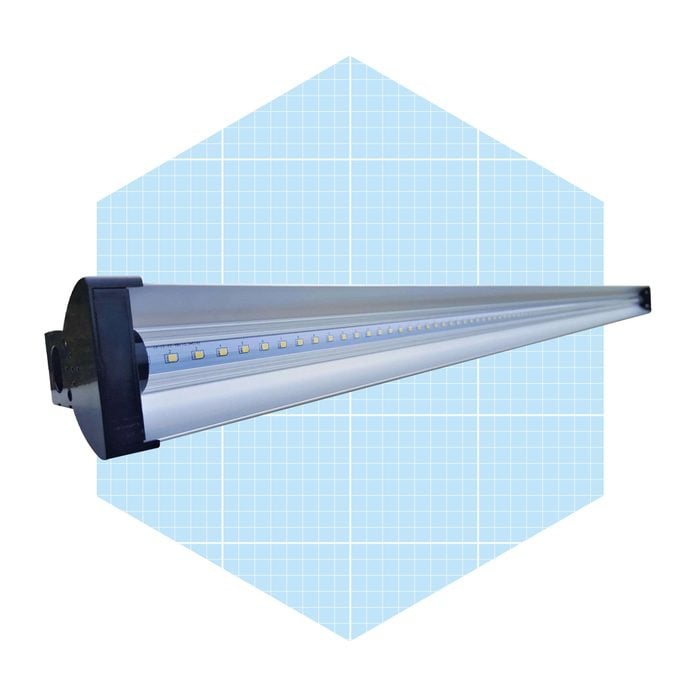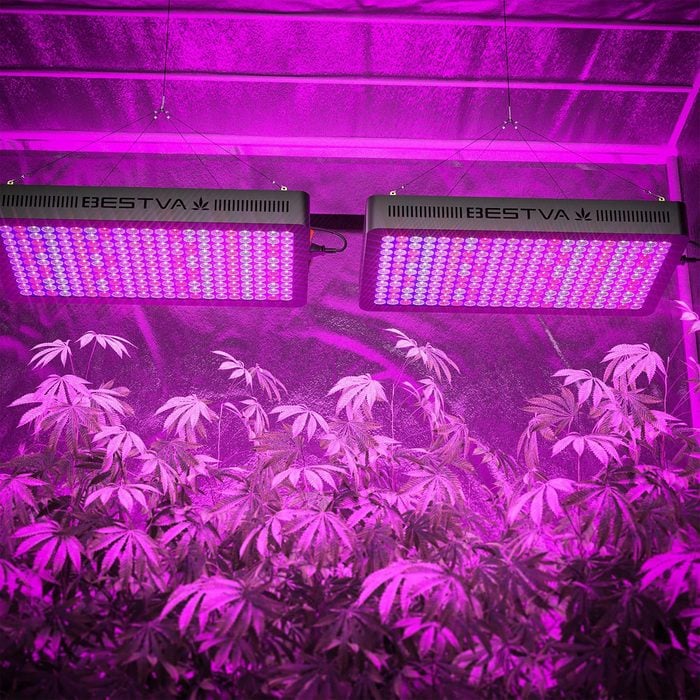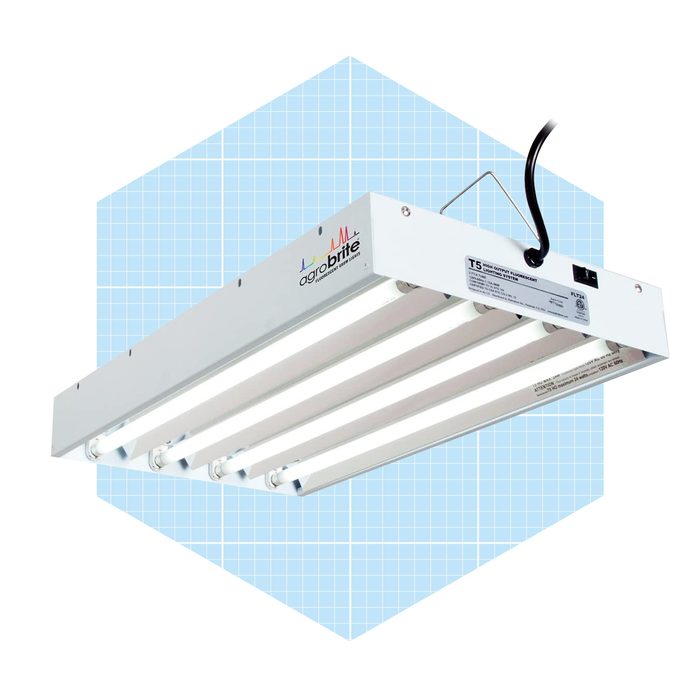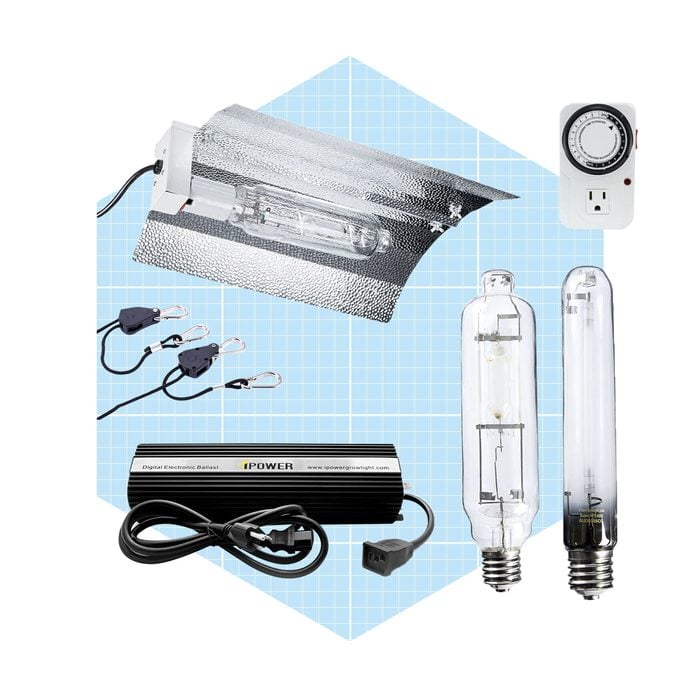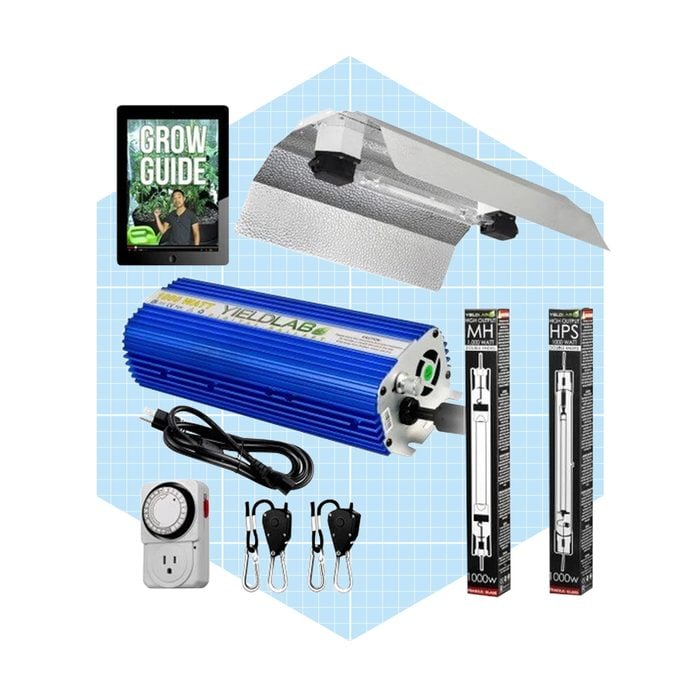6
/
8
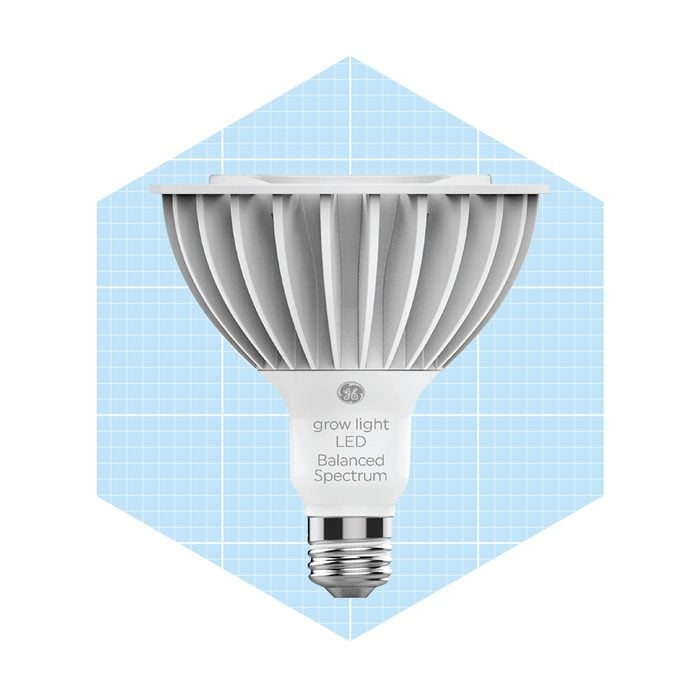 via merchant
via merchant
If you’re just growing a few pots of basil or some year-round flowers, a small arrangement of single lamps might be all you need. GE’s PAR28 Grow Light LED works for seeds and greens, tomatoes, cucumbers, peppers and herbs.
“At the showroom we are simply using these grow light bulbs combined with a clamp lamp,” says Sabharawl. This light uses a balanced spectrum to encourage growth but appears white to our eyes, adding a natural and aesthetically pleasing look to living areas.
7
/
8
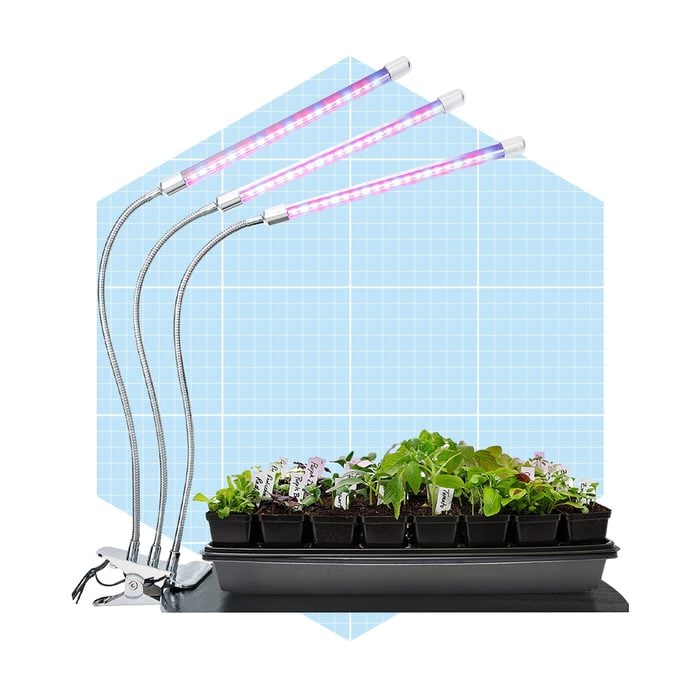 via merchant
via merchant
Brite Labs LED Grow Light clamps onto the corner of a table. Then you can move around its three flexible gooseneck arms to focus their light at your plants. That makes it ideal for quick setups, like moving a tray of plants indoors because of a storm.
It comes with a built-in timer and dimmer. It can switch between red lights (to trigger flowering) and blue lights (for photosynthesis). The light appears purple, so set it up somewhere where that won’t bother you.
8
/
8
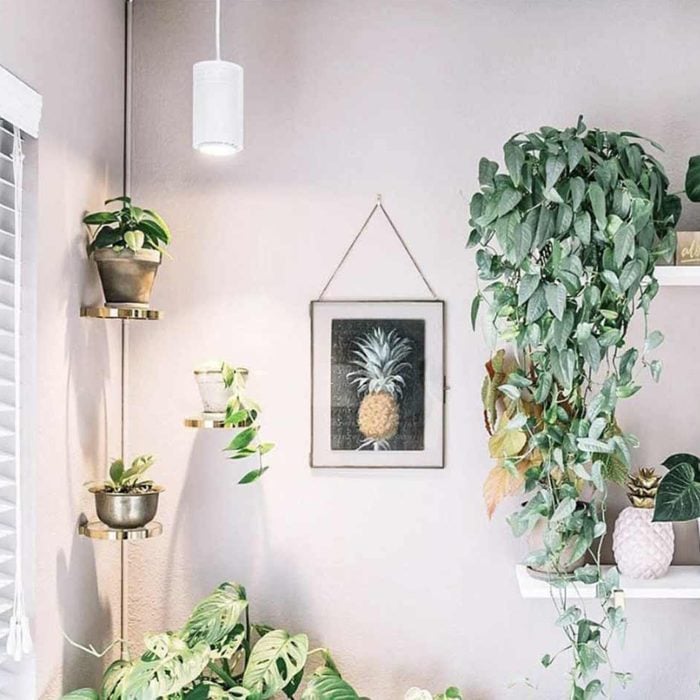 via merchant
via merchant
If fashion is as important as function and price is not a concern, then try a single grow light from Soltech Solutions or Rousseau Plant Care. They’re made to blend in with discerning interior decors.
What to Look for When Buying the Best Grow Lights
- Type of light: The main types for residential use are LED (the most common and energy efficient) and fluorescent (great for starting seeds and greens). In large grow areas and really cold climates, high-intensity discharge (HID) lights can also be a good choice, but come with a higher electricity bill.
- Type of crop: In general, you’ll need more intense light for vegetables than for greens and herbs. Light intensity (quantity) is measured in PAR (photosynthetic active radiation), while light spectrum is measured in Kelvin (K). It can all get pretty scientific, depending on how deep you want to dive in. “Research shows that the direction of light and length of exposure can make a substantial difference in the growth, fragrance and, when applicable, taste of plants,” says Sabharawl.
- Configuration: This depends on how much growing space you have and whether you’ll need to light your beds overhead, horizontally or vertically. With higher intensity lights, plan for extra ventilation and space between the ceiling and your lights as well as between your lights and the plants. Depending on the fixture, you may also need 220-volt electrical service.
- Quality: With grow lights, you get what you pay for. “As a general rule, price does indicate quality with LED grow lights,” says Russo. To further ensure you’re buying a quality product, look for UL and ETL-certified products.
Why You Should Trust Us
As a writer with a passion for the outdoors, I bring a wealth of experience to the table. My work with Family Handyman has allowed me to delve deep into the world of DIY, covering topics ranging from wildlife and green living to travel and gardening. My hands-on experience includes years spent renovating a rural Colorado home and customizing kit homes with sustainable features. I’m also a member of various well-regarded organizations, including the Outdoor Writers Association of America and the Florida Outdoor Writers Association.
For this article we spoke with Puneet Sabharawl, the CEO and co-founder of plant subscription service Horti. He currently lives in Brooklyn where he cares for more than seventy houseplants. He’s the author of Happy Plants, A Beginner’s Guide to Cultivating Healthy Plant Care Habits.
We also consulted Andy Russo, a year-round greenhouse expert at Bootstrap Farmer, which sells commercial-grade greenhouse equipment and custom greenhouses. In addition to products, the site offers reliable service and supportive resources for growers of all sizes. Russo also runs a tree nursery, Russo Tree Farm, in rural South Dakota.
How We Found the Best Grow Lights
To find the best grow lights, we started by examining a wide array of options to ensure we uncovered what gardeners need. Next, we talked to industry experts to understand what kind of light different plants crave at each growth stage. Additionally, we dug into customer reviews to see which lights shine in real gardens. We also considered factors like how much energy they use, what kind of light they give off, how long they last and if they’re a good deal. Finally, we put together a list of the best grow lights to suit gardeners of all skill levels.
FAQ
What kind of light is best for a greenhouse?
The best choice depends on the specific needs of the plants you’re growing and the conditions of the greenhouse. Here are some common types of lights used in greenhouses:
- High-pressure sodium lights: These lights are efficient and emit light in the red and orange spectrum, which is beneficial for flowers and fruit plants.
- Fluorescent lights: These options are energy-efficient and emit light in the blue spectrum, making them suitable for seedlings, young plants and leafy greens.
- LED grow lights: LED grow lights are energy-efficient and can be tuned to emit specific wavelengths of light, making them versatile for various stages of plant growth.
- Full spectrum grow lights: These lights emit a balanced spectrum of light, similar to natural sunlight, and can support plant growth throughout all stages.
- Dual-ended, high-intensity discharge fixtures: According to Russo, these produce an intense light, making them a good choice for larger fruiting crops. They can also be used on greens if they have more vertical space, he adds.
How much light do plants need in a greenhouse?
Plants in a greenhouse generally need about 12 to 16 hours of light per day for optimal growth. However, the exact amount of light depends on the type of plants and their growth stage. Seedlings and young plants typically require more light, while mature plants may need slightly less. It’s also important to consider the intensity of light, as some plants may require higher light levels than others.

